Selling on Amazon VS. Walmart
Download Amazon Seller Guide
This guide will help you get started, understand the basics of Amazon selling, and explain in simple words how it all works.

Amazon and Walmart are two of the largest online retailers in the world, and both offer opportunities for third-party sellers. If you're looking to reach the biggest possible audience and want to sell internationally, then Amazon may be the better choice. If you're an experienced seller looking to reach new audiences, then Walmart may be a good option.
In this post, we'll look closer at the key differences between selling on the Walmart marketplace vs. Amazon and help decide which platform is right for you.
What Is Amazon?
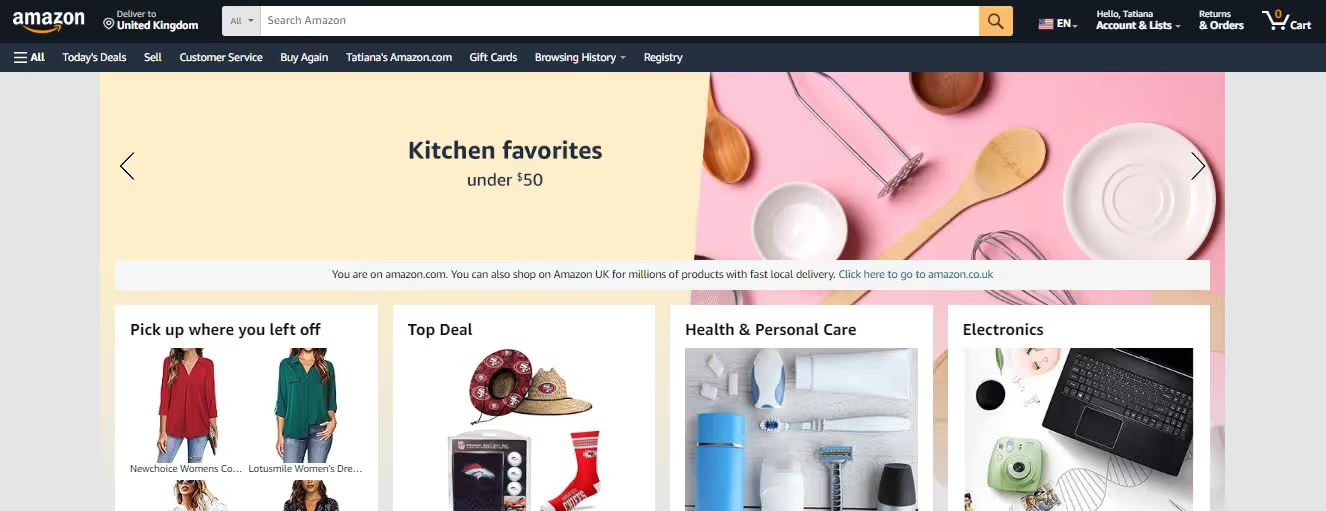
Amazon is a U.S.-based international company focusing on e-commerce. Its business areas also involve cloud computing, online advertising, digital streaming, and artificial intelligence. It is one of the Big Five American information technology companies, along with Google, Apple, Microsoft, and Meta.
Amazon is one of the largest global online retailers. According to e-commerce market share statistics, it occupies 13% of the world's online market by gross merchandise volume. It holds the first place in the U.S. with a 37.8% market share. Amazon is known for its wide selection of products, competitive prices, fast shipping, Amazon Prime, and innovative services.
Amazon is a major player in the e-commerce industry, and it has significantly impacted how people shop. That is a rapidly growing company, and it is likely to continue to have a significant impact on the global economy in the years to come.
Related: Seller Assistant App Extension Review
Seller Assistant App — the Ultimate Tool for Amazon Online Arbitrage
What Is Walmart?
Walmart is a U.S. retail corporation operating a chain of hypermarkets, discount and grocery stores. Walmart is the world's largest company by revenue, with about US$600 billion in annual revenue.
Most of Walmart's sales come from brick-and-mortar stores. In recent years, Walmart has been investing heavily in e-commerce, and it now has a market share of 6.3%. That is the second-largest e-commerce marketplace in the U.S. after Amazon.
Walmart is known for its competitive prices and wide product offering. It sells a variety of product categories, including groceries, electronics, home goods, clothing, and toys. Walmart is also known for its convenience, as many of its stores are open 24 hours a day, 7 days a week.
Pros and Cons of Selling on Amazon
Selling on Amazon offers distinct advantages and disadvantages for e-commerce sellers. Here's a description of its strengths and weaknesses.
Pros
Larger customer base
Amazon is one of the biggest online retailers in the world and has a massive global customer base. That means more potential customers shopping on Amazon than other platforms.
Fulfillment by Amazon
FBA allows sellers to leverage Amazon's extensive logistics network for storage, shipping, and customer service, making it easier to manage orders and provide fast shipping to customers.
International reach
Amazon operates in multiple online marketplaces, enabling sellers to expand into international markets.
Easy onboarding
The registration process is relatively straightforward, allowing many sellers to get started quickly.
Cons
Higher seller fees
Amazon's selling fees are higher than Walmart's. Amazon charges various fees, including referral fees and Amazon FBA fulfillment fees, which can eat into profit margins.
More competition
There is more competition on Amazon than on Walmart. Due to its popularity, many sellers compete on Amazon, which can lead to price wars. That can also make it more difficult for sellers to stand out and attract buyers.
Stringent seller requirements
Amazon has more stringent requirements for sellers than Walmart. That includes things like seller performance metrics, product reviews, and seller ratings.
Changing policies
Amazon has quite complex policies and often changes them. That can be frustrating and time-consuming for sellers, who must constantly adapt to the new rules and regulations. That may impact seller fees, product restrictions, fulfillment requirements, etc.
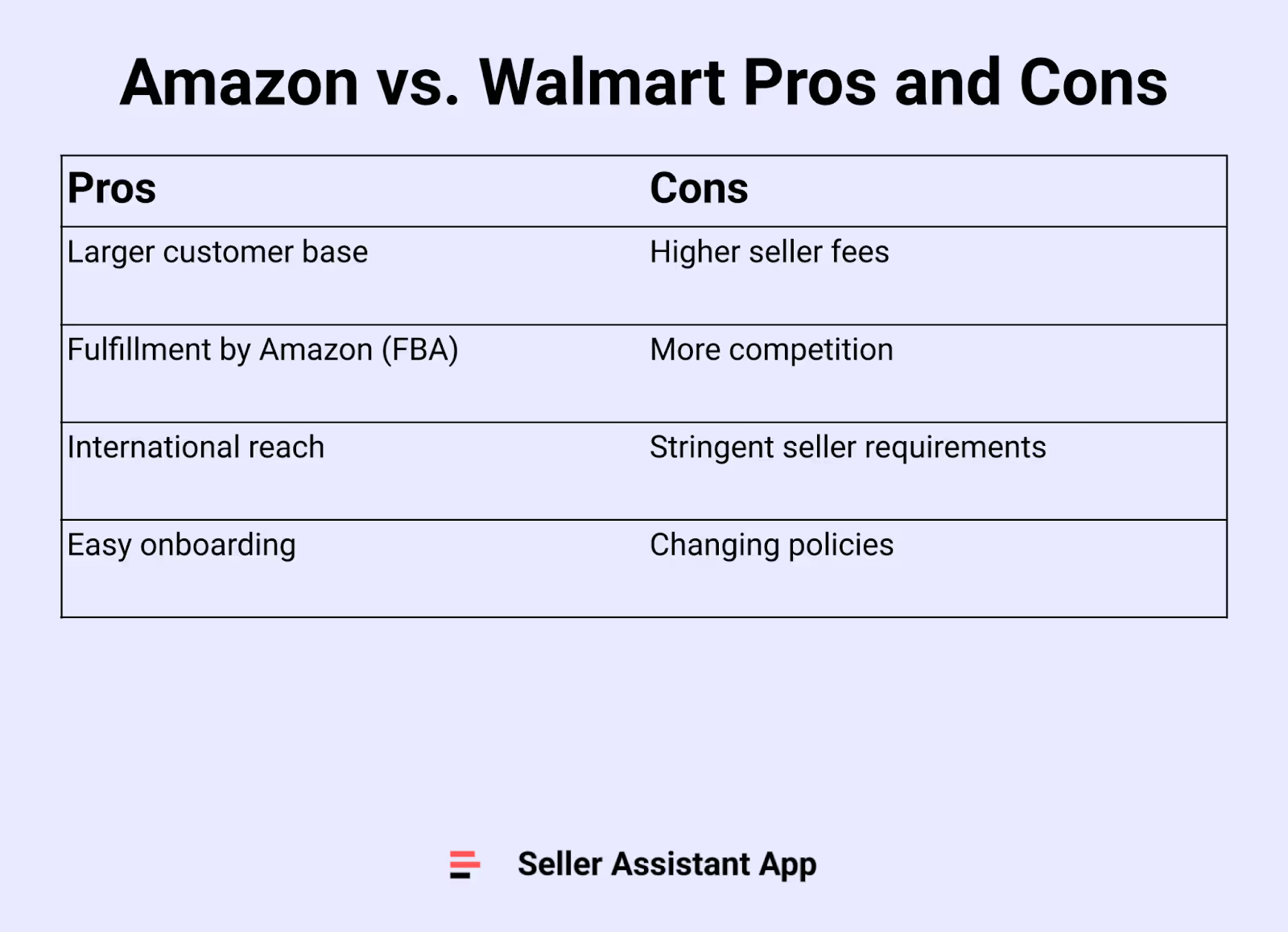
Pros and Cons of Selling on Walmart
Walmart is a retail giant, but its online sales share is more minor than Amazon’s. However, it offers its specific sales opportunities with its upsides and downsides.
Pros
Less competition
Walmart's online marketplace has less competition compared to Amazon. That allows sellers to potentially stand out more easily.
Lower seller fees
Walmart's seller fees are lower than Amazon's. No monthly subscription fee, just a fee per sale. Additionally, the fulfillment fee structure is more straightforward. That can be a significant savings for sellers, especially those who want to sell on both Amazon and Walmart.
Brick-and-mortar integration
Walmart has a solid physical retail presence, and some sellers may use this advantage to integrate their online and offline sales strategies. They can also use Walmart’s in-store pickup option.
Walmart+ customer base
Walmart+ is a paid subscription service similar to Amazon Prime. The membership has a loyal customer base different from Amazon’s. It offers additional reach potential. Walmart+ members typically spend more money than non-members.
Cons
Smaller customer base
Walmart's online customer base is smaller and primarily concentrated in the United States. That means fewer potential customers are shopping on Walmart than Amazon. Narrower customer base limits overall and international reach.
Selective onboarding
Walmart has a more selective and lengthy approval process for sellers. Additionally, sellers must have a U.S.-registered business. That can make it harder for some businesses to join the platform.
Less flexible fulfillment
Walmart offers fewer fulfillment options than Amazon. Walmart Fulfillment Services (WFS) provides fulfillment options similar to FBA. However, it doesn’t have as many fulfillment centers as Amazon.
Less established platform
Walmart is a less established and trusted online shopping platform than Amazon. That means shoppers may be less likely to buy from Walmart than from Amazon sellers.
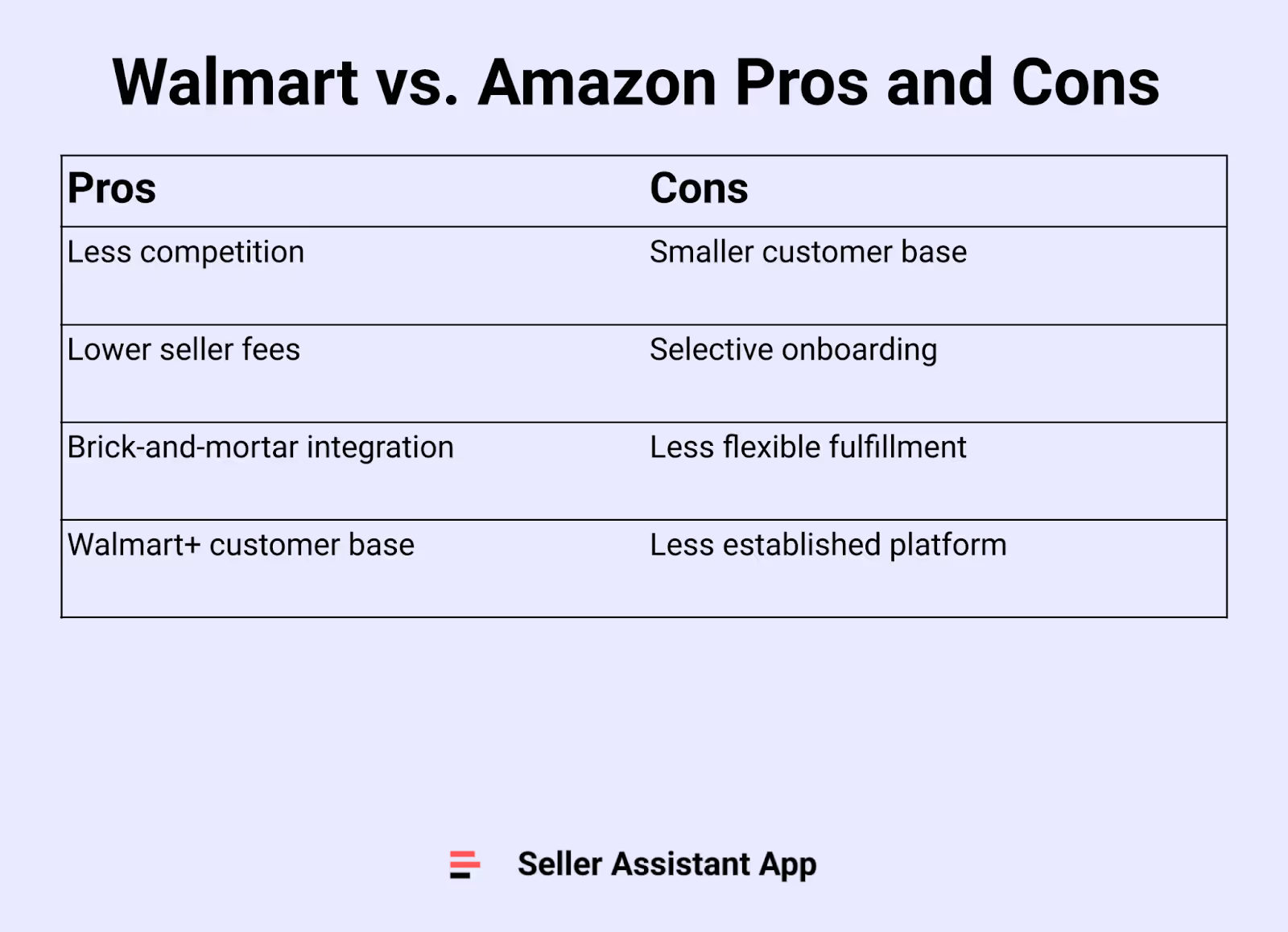
Walmart vs. Amazon Compared
Walmart and Amazon are two of the world's most influential retail giants but have distinct differences.
Amazon is an online marketplace and global e-commerce platform with a strong international online presence. Walmart is a multinational retail corporation with a strong focus on both brick-and-mortar and e-commerce retail. It operates physical stores across the United States and many other countries.
Below, you can find a comprehensive comparison of the two.
Customer base
Amazon
Amazon has an extensive global e-commerce marketplace and a huge customer base worldwide. That includes Prime members who benefit from various perks, like fast and free shipping, deals and discounts, and access to Amazon Prime Video. Amazon has 310 million active users in more than 100 countries.
Walmart
Walmart's customer base is substantial, with a focus on the United States. It includes both online and in-store shoppers. Walmart offers a Walmart+ membership program that gives members a number of benefits, including free two-day shipping on many items and exclusive discounts. Walmart has 240 million customers. It operates more than 10,500 stores in 19 countries alongside online retail websites.
Seller business setup
Amazon
Amazon offers a more straightforward onboarding experience for beginners than Walmart. After you’ve registered a seller account, you can list your product and start selling rapidly. Amazon accepts international sellers from certain countries for registration, while Walmart is limited to the US.
However, be aware of Amazon’s listing requirements and criteria, which may include product IDs. Amazon's listing policies can change frequently, potentially impacting your selling ability.
Walmart
Walmart is more challenging for new sellers as they require a review process that includes business qualifications and US-specific documentation. Only US applications are accepted; even after approval, you must follow a launch checklist.
Additionally, Walmart’s Seller Central is complicated to use, and Walmart's marketplace sellers often experience a lot of bugs.
Competition
Amazon
Amazon is a highly competitive marketplace. Sellers use various strategies and tools to rank at the top and achieve high sales. The cost of pay-per-click (PPC) advertising is also quite high on Amazon, which can be challenging for smaller sellers to compete with larger ones.
Walmart
Walmart's marketplace is less competitive than Amazon's. Achieving higher rankings, even in competitive niches, is relatively easier. The PPC costs are also lower. This lower competition on Walmart gives sellers an excellent opportunity to rank high on the platform with less effort.
Selling fees
Amazon
Amazon charges account fees, product sales fees, fulfillment fees, storage fees, and a number of other fees depending on the provided services and product category.
Selling fees
- Account fees include two plans (Individual at $0.99 per item sold, Professional at $39.99 per month);
- Sales fees include per-item fee, referral fee (6%-45% of selling price), closing fee, and high-volume fee.
Fulfillment fees
- Amazon FBA fees vary based on product size, dimensions, and weight, and start at $3.22;
- Storage fees start at $0.87/cubic foot during Q1-Q3 and $2.40/cubic foot during Q4.
Related: Amazon FBA Fees 2023
Walmart
Walmart charges seller fees, including product sales fees, fulfillment fees, and storage fees.
Selling fees
- No account fee; signing up is free.
- Product referral fee (6% to 20% of the selling price, depending on the category).
Fulfillment fees
- You can self-fulfill or use Walmart's fulfillment service (Walmart WFS);
- Specific fees are based on weight and start at $3.45;
- Storage fees start at $0.75/cubic foot during Q1-Q3 and $2.25/cubic foot during Q4.
Fulfillment
Amazon
Amazon operates a robust global logistics network of its own warehouses, which allows third-party sellers to store inventory and leverage its shipping and customer service capabilities.
Amazon provides two fulfillment methods: Fulfillment by Amazon (FBA) and Fulfillment by Merchant (FBM). FBA allows sellers to store inventory in Amazon's warehouses, and Amazon handles packing, shipping, and customer support.
FBA sellers can receive an Amazon Prime badge, more chances to get the Buy Box, and better visibility in search results. Seller-Fulfilled Prime is an option for non-FBA sellers, but you need a strong record for on-time deliveries and customer satisfaction to qualify.
Related: FBA vs FBM: Which is Better for Amazon Sellers in 2023?
Walmart
Walmart provides fulfillment services through Walmart Fulfillment Services (WFS), offering warehousing, shipping, and customer support for sellers on its platform in the U.S.
Walmart offers two fulfillment options: Walmart Fulfillment Services (WFS) and Self-fulfillment. WFS is for established sellers only; new sellers can only self-fulfill.
Walmart does not allow using Amazon Multi-Channel Fulfillment (MCF) or Amazon Logistics codes; doing so can result in account suspension.
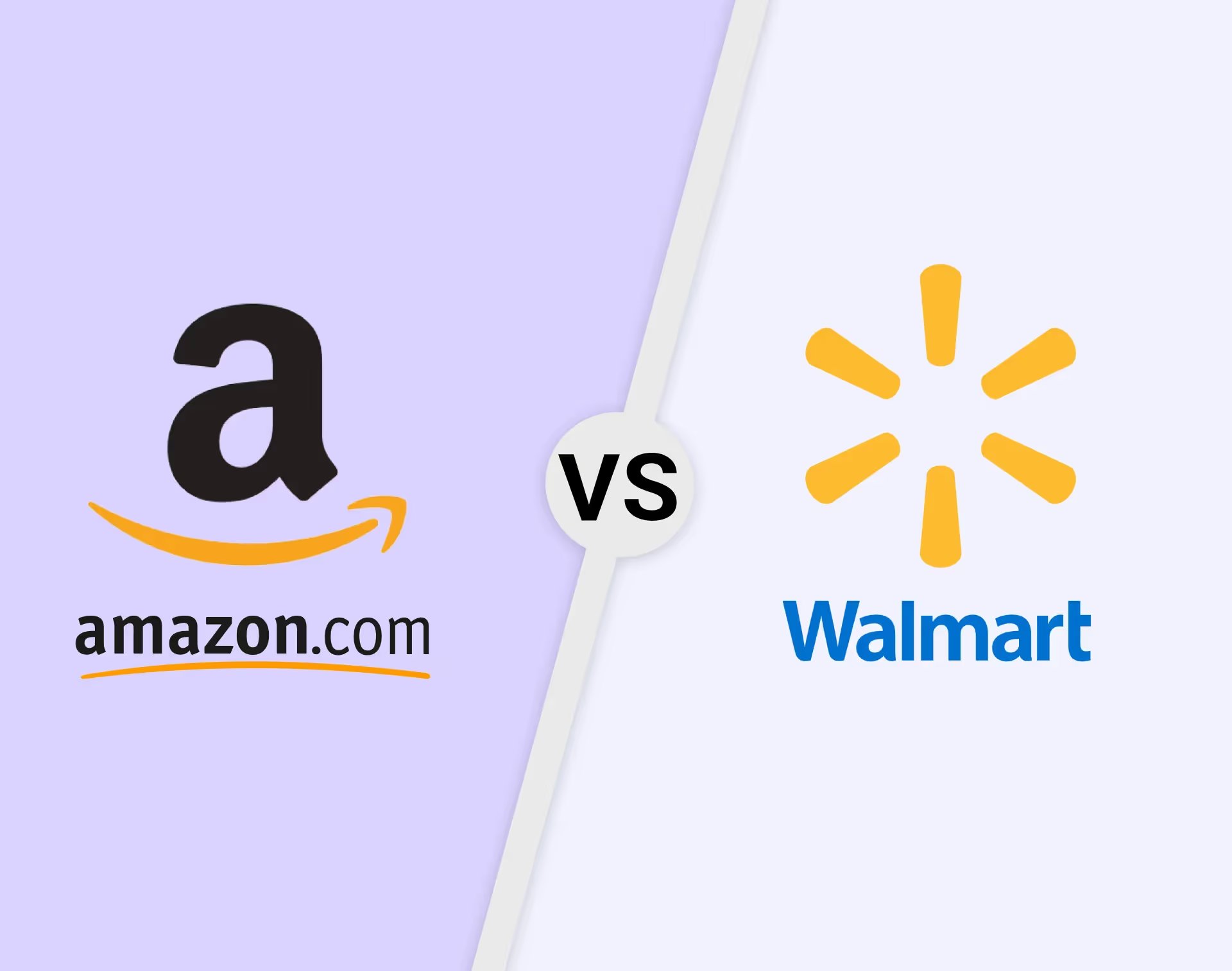
Walmart Plus vs. Amazon Prime
Walmart Plus and Amazon Prime are both loyalty programs offered by Walmart and Amazon. These programs provide various benefits to subscribers. Here's a comparison of Walmart Plus and Amazon Prime.
Amazon Prime
Membership cost
Amazon Prime subscription costs $14.99 per month or $139 annually. There is also a discounted rate for students and an Amazon Prime Video-only plan.
Free shipping
Amazon Prime provides free two-day shipping on eligible items, as well as same-day or one-day delivery in select areas. Amazon Fresh and Whole Foods Market delivery is also available for grocery orders.
Amazon Prime Video
Subscribers gain access to Amazon Prime Video, which includes a library of movies, TV shows, and original content.
Amazon Music
Amazon Prime members can access Amazon Music, including a limited music streaming library.
Prime Reading
This service offers access to a rotating selection of e-books, magazines, comics, and more.
Amazon First Reads
Early access to new books and Kindle releases.
Prime Wardrobe
A "try before you buy" fashion service allows members to order clothing and accessories for a seven-day trial period.
Exclusive discounts
Prime members get exclusive access to Amazon's Prime Day sales event and other special discounts.
Walmart Plus
Membership cost
Walmart Plus membership cost is $12.95 per month or $98 per year.
Free shipping
Walmart Plus offers free unlimited delivery of groceries and other select products from Walmart stores to your doorstep. There’s no minimum order value.
Same-day delivery
Subscribers get access to same-day delivery on eligible items from Walmart stores.
Mobile Scan & Go
In-store shoppers can use the "Scan & Go" feature on the Walmart app to scan items while shopping, pay through the app, and skip the checkout line.
Fuel discounts
Members receive fuel discounts of up to 5 cents per gallon at Walmart, Murphy USA, and Murphy Express fuel stations.
Access to Walmart's in-store prices
Walmart Plus members can access in-store prices while shopping on the Walmart website, even without physically being in the store.
Video streaming with Paramount+
Paramount+ subscription included with Walmart Plus gives access to over 40,000 episodes, hit movies, and live sports.
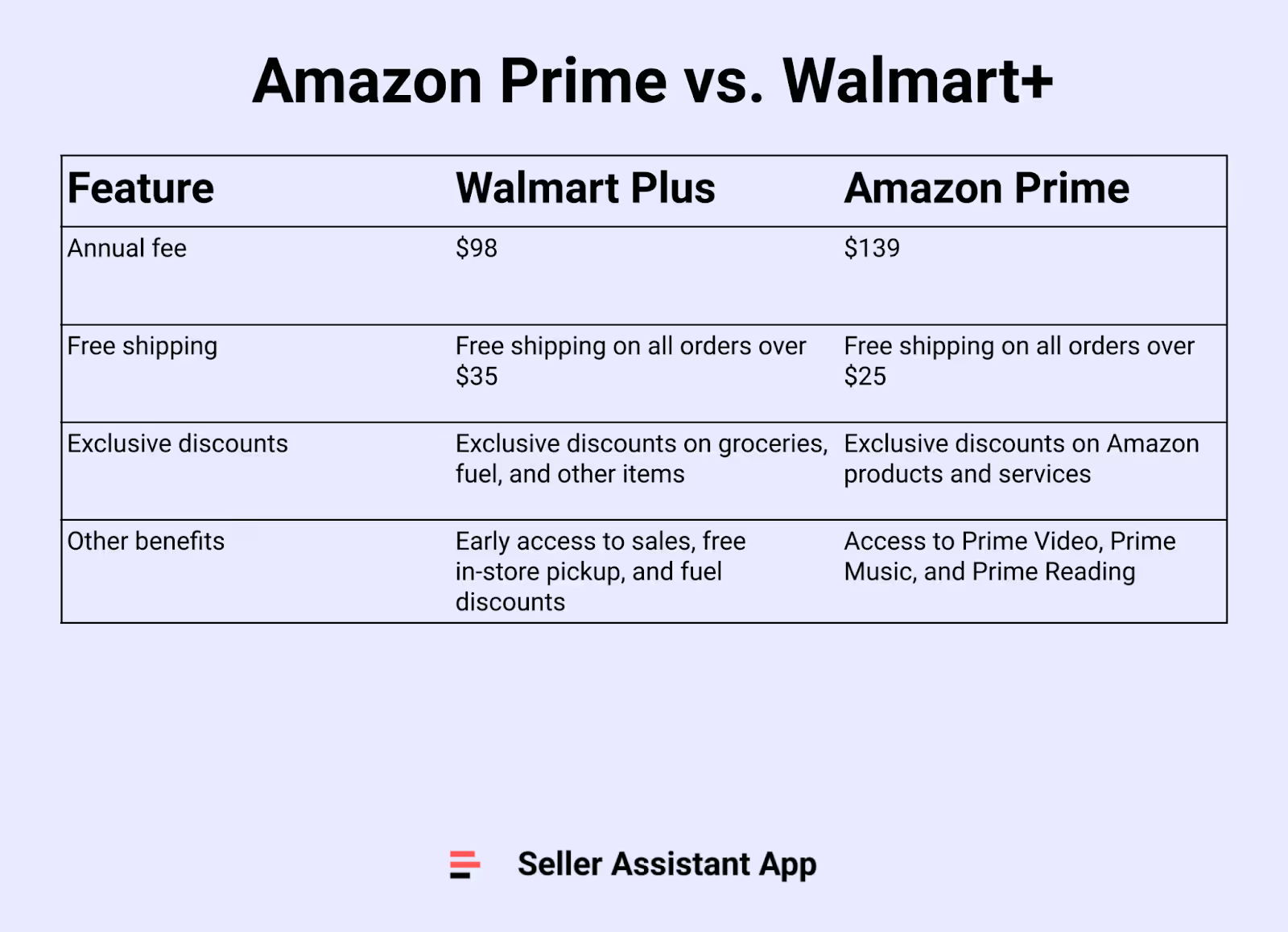
Related: How to successfully launch your brand on Walmart
Can You Sell both on Amazon and Walmart?
Many sellers choose to sell on Amazon and Walmart to reach a wider audience and increase their sales. By selling on both platforms, you can get a wider audience, increase sales, diversify risk, and take advantage of the different strengths of these marketplaces.
However, you must remember that selling on Amazon and Walmart involves double work and increased investment.
FAQ
Who is number 1, Walmart or Amazon?
Amazon is the number 1 online retailer in the U.S., with a market share of over 37%. Walmart is the world's largest retailer by revenue, but most of its sales come from brick-and-mortar stores. Regarding e-commerce, Walmart has a market share of around 7%.
Is Walmart a major competitor to Amazon?
Yes, Walmart is a major competitor to Amazon. Walmart is the world's largest retailer by revenue, and it is investing heavily in its e-commerce business. Walmart offers a wide selection of products at competitive prices and has a strong brick-and-mortar presence. That makes Walmart a biggest competitor to Amazon, especially in the United States.
What are the advantages of Walmart over Amazon?
Walmart has several advantages over Amazon, including lower seller fees, less competition, and a strong brick-and-mortar presence. Walmart also offers a convenient in-store pickup option.
Is Walmart the 1 in the world?
Yes, Walmart is the largest retailer in the world by revenue, with over $600 billion in annual revenue in 2022.
Who is the largest retailer in Europe?
The largest retailer in Europe is the Schwarz Group, a German company that owns the Lidl and Kaufland supermarket chains. The Schwarz Group has over €125 billion in annual revenue and operates over 12,600 European stores.
Final Thoughts
In conclusion, both Amazon and Walmart offer specific advantages and disadvantages for sellers. The best platform for you will depend on your sales goals. You can also sell on both of them to scale your business.
No matter the platform, you must select profitable products to sell. That is key to your success. The best way to find such products is by using product research tools.
Seller Assistant App is a product research extension that lets you find highly profitable items in a few clicks. It shows all the data you need right on the Amazon search and product pages. You can use the FBM&FBA profit calculator, Quick View, Stock Checker, Restrictions Checker, and many other essential product research features, all in one place.
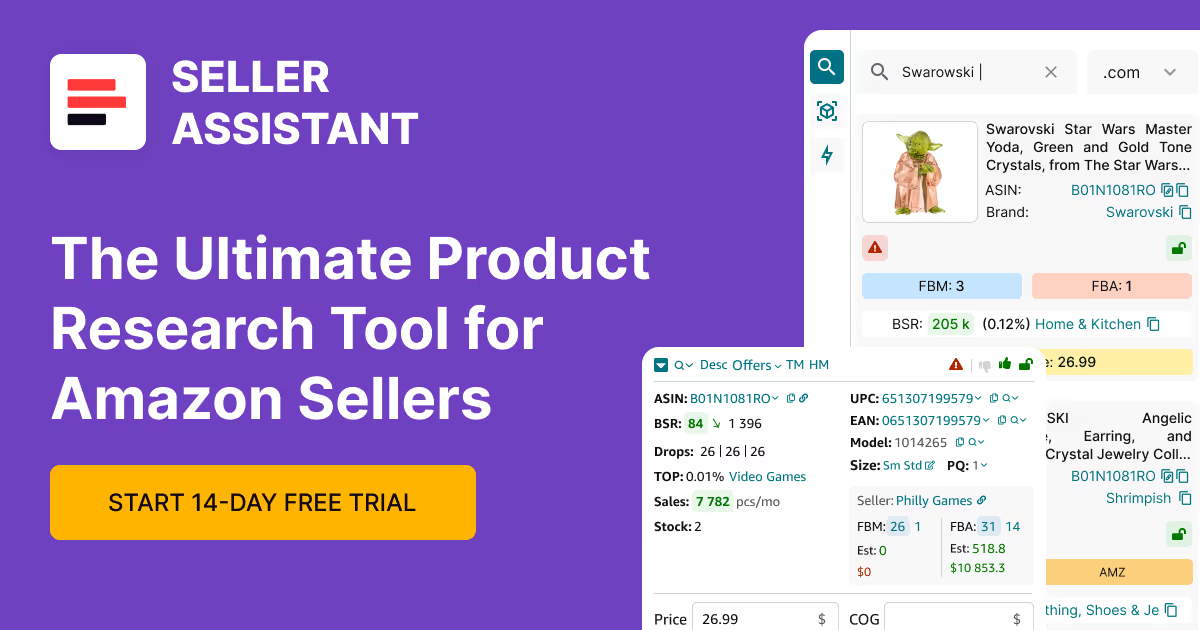
.svg)













